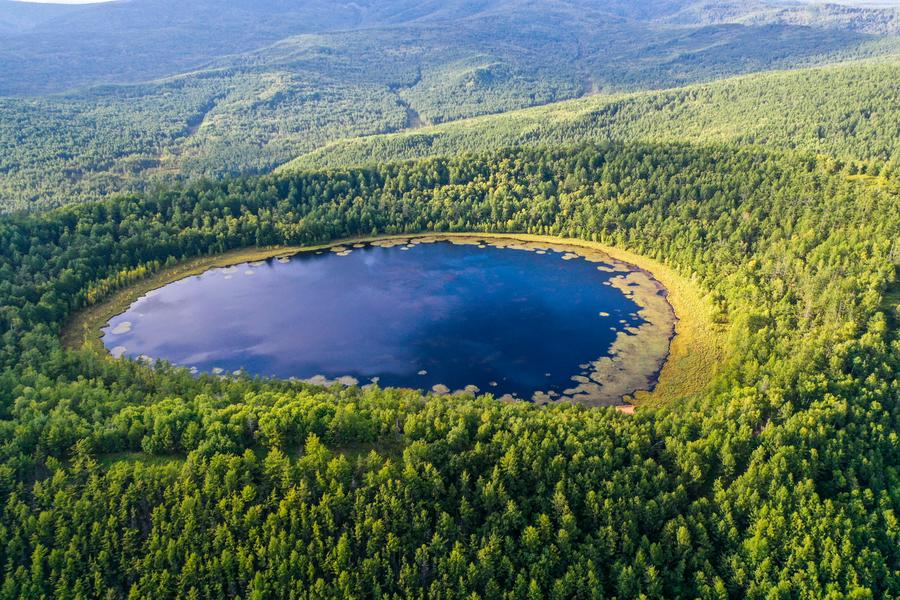
This aerial photo taken on Aug. 31, 2023 shows the scenery of Tianchi (Heavenly Lake) in Arxan of
Hinggan League, north China's Inner Mongolia Autonomous Region. [Photo/Xinhua]
The total carbon sink volume of forests, grasslands and wetlands in north China's Inner Mongolia Autonomous Region has reached 119 million tonnes so far, ranking first in the country, local authorities said.
The total carbon reserves of the region's forests, grasslands and wetlands have reached 10.54 billion tonnes, ranking second in China, according to the regional forestry and grassland bureau.
A carbon sink is anything that absorbs more carbon from the atmosphere than it releases, and forests, grasslands and wetlands are carbon sinks.
Ma Qiang, deputy director of the bureau, said that in recent years, Inner Mongolia has pushed ahead with land-greening efforts to increase carbon sinks, stepped up ecological restoration efforts to improve the quality of carbon sinks, and implemented measures to promote carbon-sink trading, among other measures.
Ma added that since 2023, Inner Mongolia has seen the volume of carbon-sink trading reach 1.03 million tonnes, with its trading value exceeding 32.31 million yuan (about 4.53 million U.S. dollars).
Inner Mongolia is the largest and most comprehensive ecological functional area in northern China, with its forest, grassland and wetland areas ranking among the top in the country.
China has announced that it will peak carbon dioxide emissions by 2030 and achieve carbon neutrality by 2060.




